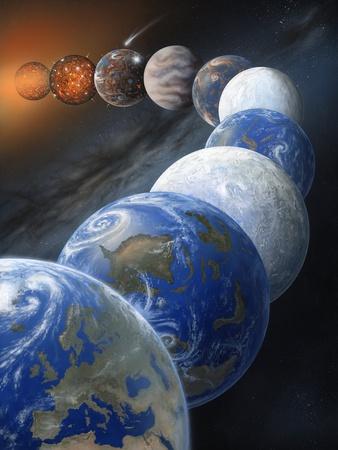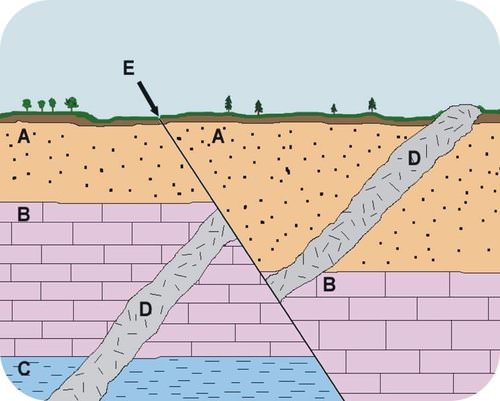
This is molten rock found below the earth's surface.
What is magma?
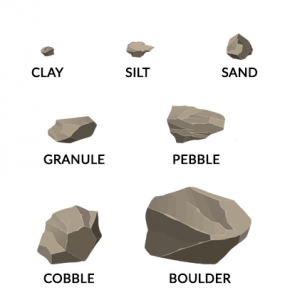
Sedimentary rocks are formed from this type of material (the image shows different sizes of it).

What is sediment?
True or false: All metamorphic rocks have layers.
FALSE. Some are banded (layered) but others are just compressed and partially melted.

Each type of rock can become sediment if it is ________________.
Weathered.
Crystal size in igneous rock depends on __________

Time of cooling. Magma or lava cools and hardens to form igneous rocks. However, larger crystals form over a longer period of time, such as thousands or millions of years.
This is molten rock found above the earth's surface.
What is lava?
What does this image show?
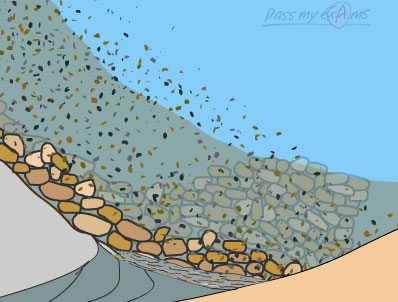
Deposition of sediment, layering.
The two reasons this rock looks the way it does (main causes of metamorphic rock formation).

Heat melts the layers, but not completely. Pressure causes the layers to move around a little bit.

Each type of rock can become magma if it is _______________.
Melted.
Make an inference for what could have caused letter E
Probably an earthquake. The ground has shifted along a straight line, called a fault. This sliding results in the shaking we feel on the surface.
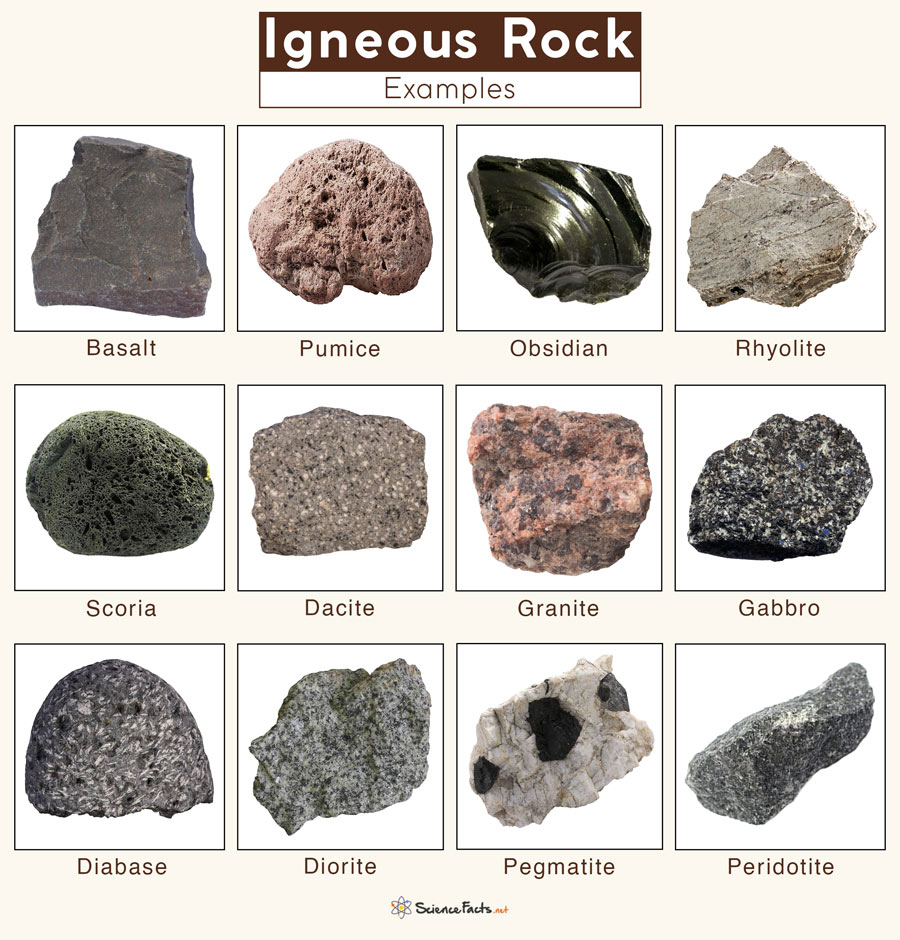
WHAT IGNEOUS ROCKS ARE MADE OF
Minerals of cooled lava or magma
The process involved in making sedimentary rock where water mixed with minerals seeps into pores to "glue" the rock together.
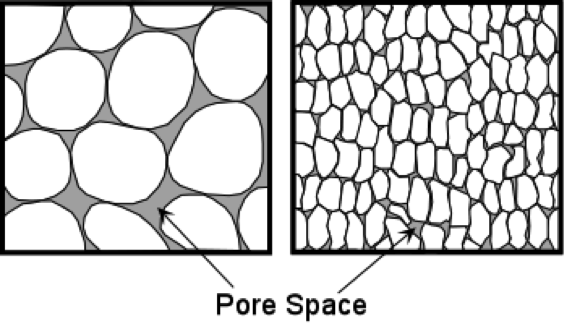
What is cementation?
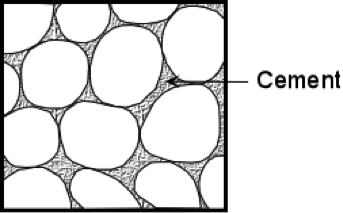
Letter ______ is the oldest material. Letter _____ is the youngest (newest) material.
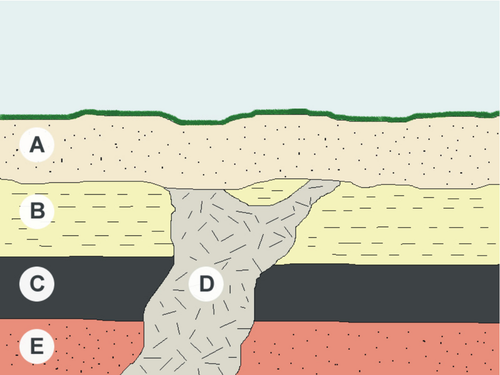
E is oldest, A is youngest.
The law of superposition states "the oldest rock strata (layers) will be on the bottom and the youngest at the top."

Most rocks form over the course of:
a. Days
b. Centuries (100s of years)
c. Millions of years
Millions of years. It takes LOTS of time to weather, erode, and deposit sediments, as well as move rocks around in the Earth.
What one process does this image show?

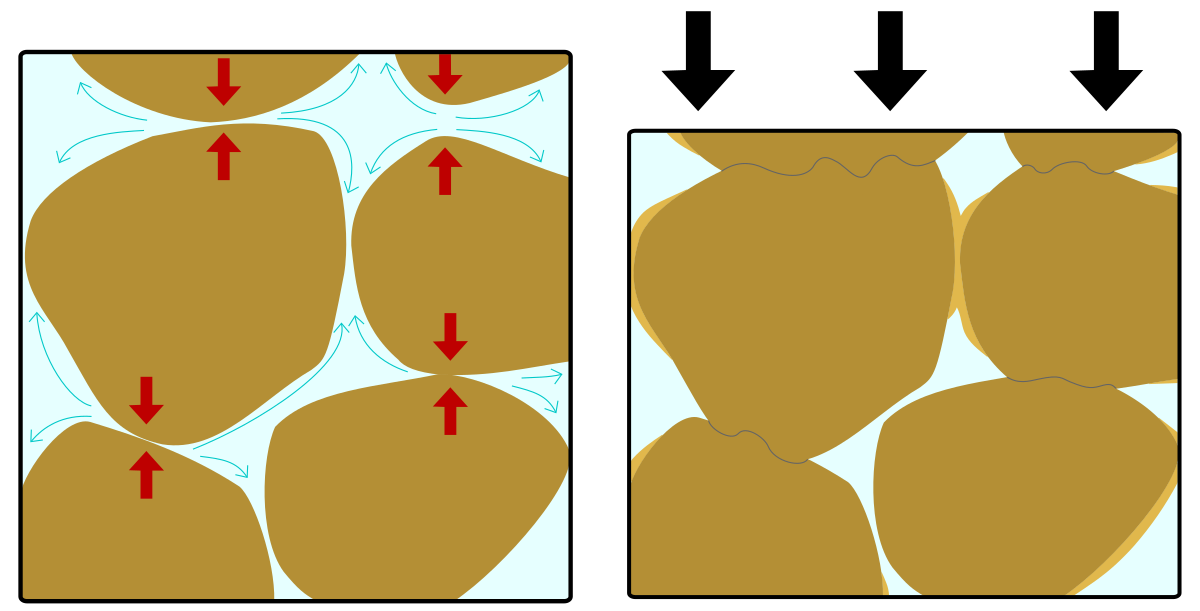
PRESSURE or COMPACTION of sediments.
The difference between intrusive and extrusive igneous rocks.

Intrusive: formed INside the Earth.
Extrusive: formed after they EXit the Earth.

Name 3 characteristics we look for when identifying sedimentary rocks ("Sedimentary rocks have OR don't have...")
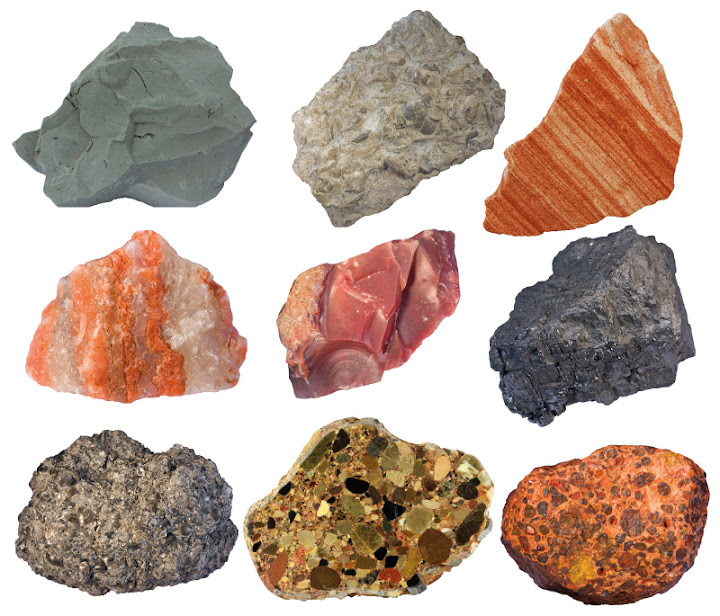
Can see the grains, banding or foliation, no crystals, fossils, dull luster, can crumble apart

What happened between layers A and B?
 Weathering and/or erosion. Probably both, since some of the igneous intrusion (D) looks to be worn away.
Weathering and/or erosion. Probably both, since some of the igneous intrusion (D) looks to be worn away.
Model with arrows how metamorphic rock can turn into igneous rock. Use correct terms.
Metamorphic -> Melting to magma -> cooling and hardening to igneous

As a group, use acting (no words) to show how igneous rocks form and can be turned back into sediment.
Raise your hand when you are ready to perform.
Show the process of cooling and hardening molten rock, then weathering of the rock into sediment.
The most common igneous rock, which covers the ocean floor and can be found all over Mt. Merapi.
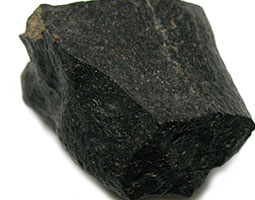
What is basalt?

Two pieces of evidence for how you know what type of rock this is

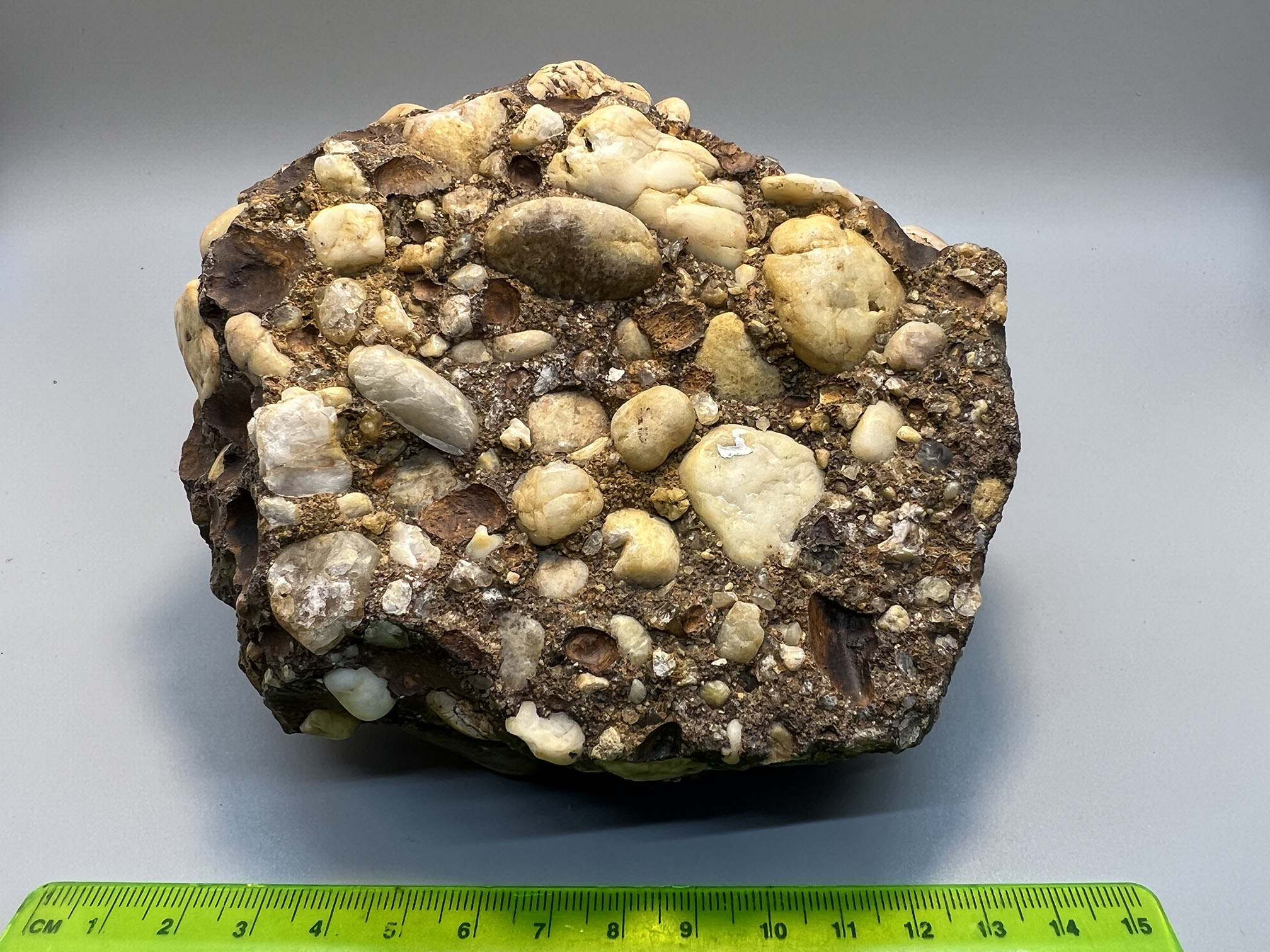
Conglomerate or clastic sedimentary rock.
Multiple types of sediment visible; cemented together; dull luster; no crystals "grown into" the rock
Name 3 characteristics we look for when identifying metamorphic rocks. ("Metamorphic rocks have OR don't have...")
Banded, some crystals, some sediments visible, wavy or distorted layers, compressed sediments (foliation), some vitreous luster
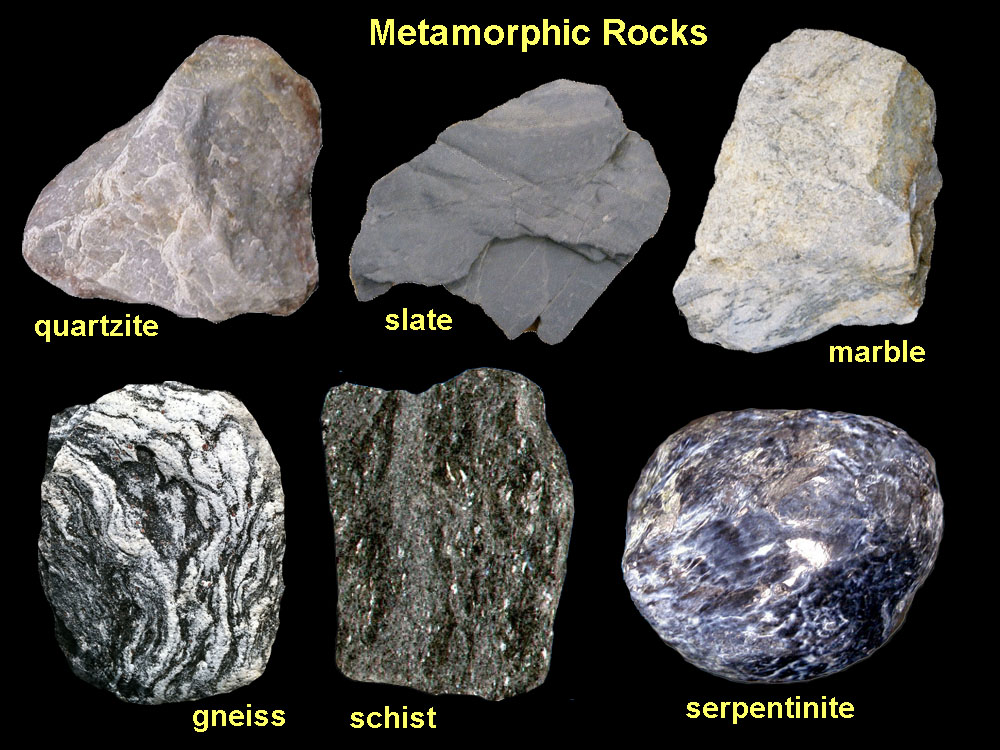
Make a Venn diagram to compare and contrast metamorphic and igneous rocks. At least 1 idea needed in each section.

Metamorphic: can still see sediments and possibly banding; partially but not completely melted/cooled; pressure is needed
Igneous: formed from completely melted/cooled rock; forms only from magma or lava; can form above or below Earth's surface
Both: have crystals; made of minerals; require heat to form
The chicken or the egg?
Which came first, sedimentary, metamorphic, or igneous rocks? Make your case in 20 words or less.
Earth started as a ball of dust and gas that gravitated together. "At first, the planet likely consisted almost entirely of molten magma. Over the course of a few hundred million years, the planet began to cool and oceans of liquid water formed."
